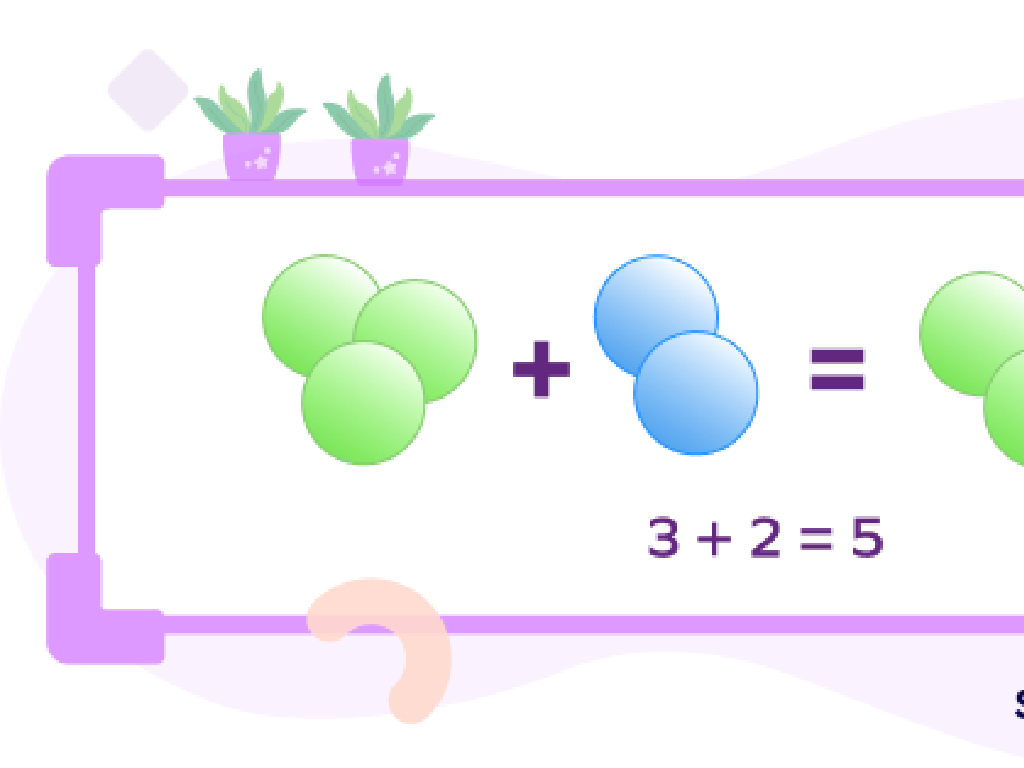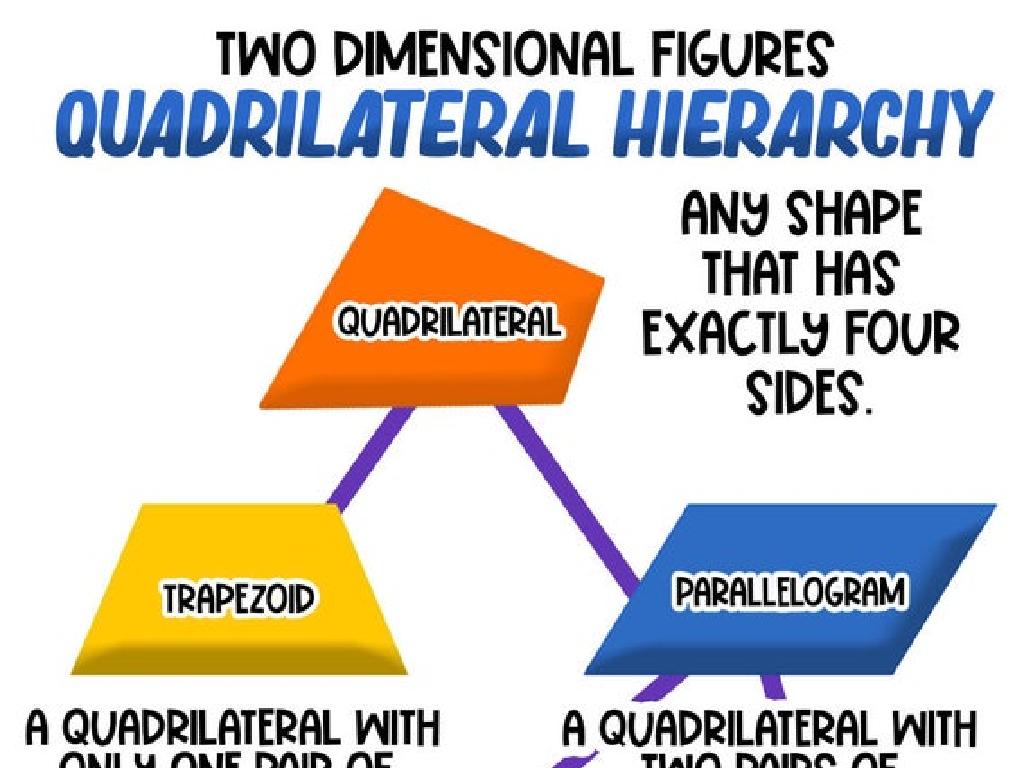Graph Solutions To Two-Step Inequalities
Subject: Math
Grade: Eighth grade
Topic: One-Variable Inequalities
Please LOG IN to download the presentation. Access is available to registered users only.
View More Content
Introduction to Two-Step Inequalities
– Understanding basic inequalities
– Inequalities show how one value is less/greater than another.
– Recap of one-step inequalities
– Review solving for x when there’s one operation.
– Introduction to two-step inequalities
– Learn to solve when two operations are involved.
– Graphing two-step inequalities
– Visualize solutions on a number line.
|
Begin the lesson by defining inequalities and comparing them to equations, emphasizing that they show a relationship where one value is less than, greater than, not less than, or not greater than another. Recap one-step inequalities to ensure students are comfortable with basic concepts before moving on. Introduce two-step inequalities as an extension of one-step inequalities, involving two operations to solve for the variable. Explain that graphing these solutions on a number line helps visualize the range of possible solutions. Provide examples and practice problems to solidify understanding.
Solving Two-Step Inequalities
– Define two-step inequalities
– An inequality solved by performing two operations
– Explore examples
– For example, 3x + 4 > 10, subtract 4, then divide by 3
– Understand the solution goal
– Find all values of x that make the inequality true
– Graphing the solution range
– Use a number line to represent solutions visually
|
This slide introduces students to two-step inequalities, which require two operations to solve typically a combination of addition/subtraction and multiplication/division. Start by defining two-step inequalities and then show how to solve them using examples. Emphasize the goal of finding a range of values that satisfy the inequality, not just a single solution. Encourage students to think of the inequality as a balance scale that they need to keep balanced while solving. Conclude by demonstrating how to graph the range of solutions on a number line, which provides a visual representation of all possible solutions. This will prepare students for more complex inequality problems and enhance their understanding of solution sets.
Solving Two-Step Inequalities
– Isolate the variable in the inequality
– Start by undoing addition or subtraction
– Use inverse operations to solve
– Then undo multiplication or division
– Check the solution by substitution
– Replace the variable with the solution to verify
– Graph the solution on a number line
– Plot the solution set and shade correctly
|
This slide is aimed at teaching students the process of solving two-step inequalities. Begin by isolating the variable on one side of the inequality, usually by undoing any addition or subtraction. Next, perform the inverse operation of multiplication or division to completely isolate the variable. It’s crucial to remember that if you multiply or divide by a negative number, you must flip the inequality sign. After finding the solution, always check it by substituting the value back into the original inequality to ensure it makes a true statement. Lastly, demonstrate how to graph the solution on a number line, including how to determine which way to shade the line based on the inequality sign. Provide examples and possibly a class activity where students can practice these steps.
Graphing Two-Step Inequalities
– Graphing on a number line
– Plot the solutions of inequalities on a horizontal line
– Open vs. closed circles
– Open circle: value not included, Closed circle: value included
– Shading the solution set
– Shade the region representing all possible solutions
|
This slide introduces students to the process of graphing two-step inequalities. Start by explaining how to represent solutions on a number line, emphasizing the importance of direction and spacing. Discuss the difference between open and closed circles, ensuring students understand that open circles mean the number is not part of the solution, while closed circles indicate inclusion. Then, demonstrate how to shade the area of the number line that represents the solution set to the inequality. Provide examples of both types of circles and various shading patterns to illustrate different types of solutions. Encourage students to practice by graphing a series of inequalities with different solutions.
Graphing Two-Step Inequalities
– Solve two-step inequalities
– Combine like terms and use inverse operations
– Graph solutions on a number line
– Plot the solution set and shade the correct side
– Discuss the logic behind solutions
– Understand why solutions are represented as ranges
– Class activity: Practice problems
|
This slide is aimed at providing students with a hands-on activity to solve and graph two-step inequalities. Start by guiding them through the process of solving inequalities by combining like terms and using inverse operations. Once they’ve found the solution, instruct them on how to graph it on a number line, ensuring they understand which side to shade. Discuss the reasoning behind the solutions, emphasizing that inequalities often have multiple possible solutions, hence the range on the graph. The class activity will involve students working through practice problems in pairs or small groups, allowing them to apply what they’ve learned and receive immediate feedback. Provide at least four different two-step inequalities for them to solve and graph, ensuring a variety of examples to cover different cases they might encounter.
Real-World Applications of Two-Step Inequalities
– Two-step inequalities in daily life
– Budgeting your weekly allowance
– If you have $50, spending $x on food and $y on entertainment must satisfy $x + $y d 50.
– Calculating travel distances
– Finding how far you can travel if you drive at 60 mph for at least 1 hour but no more than 3 hours.
– Making informed decisions
|
This slide aims to show students how two-step inequalities are not just abstract math concepts but are actually used in everyday situations. For instance, when budgeting an allowance, one must consider the total amount available and the costs of different expenses to ensure they do not overspend. Similarly, when planning a trip, one can use inequalities to determine the minimum and maximum distances they can travel within a given time frame. Encourage students to think of other examples where they might need to use inequalities to make decisions. This will help them understand the practical importance of learning and mastering this mathematical concept.
Class Activity: Graphing Two-Step Inequalities
– Group activity: solve & graph inequalities
– Each group presents their solution
– Explain your reasoning to the class
– How did you arrive at the solution? What steps did you take?
– Class votes on best solution
|
Divide the class into small groups and assign each a different two-step inequality to solve and graph. Provide guidance on how to isolate the variable and use inverse operations. Each group will then present their graphed solution on the board and explain the steps they took to solve the inequality. Encourage clear communication and logical reasoning during presentations. After all presentations, hold a class vote to determine the most accurate and creative solution, fostering a sense of healthy competition and peer recognition. Possible inequalities for activity: x + 3 > 7, 2y – 4 d 10, -3z + 6 < 9, 4w/2 e 8.
Review and Q&A: Two-Step Inequalities
– Recap: Solving two-step inequalities
– Review the process of isolating the variable
– Ask: Open for student questions
– Discuss: Additional example problems
– Solve an inequality together as a class
– Engage: Interactive Q&A session
– Encourage participation and clear doubts
|
This slide is aimed at reinforcing the day’s lesson on solving two-step inequalities. Begin by summarizing the steps to isolate the variable and find the solution set. Open the floor to student questions, allowing them to address any uncertainties they may have encountered during the lesson. If there are common areas of confusion, provide additional examples to clarify these points. Use this time to engage with the students interactively, encouraging them to participate and facilitating a deeper understanding of the topic. Prepare to offer at least 4-5 different example problems that cater to varying levels of difficulty to ensure all students can follow along and benefit from the review session.
Homework: Mastering Two-Step Inequalities
– Practice two-step inequalities
– Solve additional problems to strengthen skills
– Introduction to compound inequalities
– Preview compound inequalities for next lesson
– Emphasize consistent practice
– Regular practice is key to understanding
– Homework reinforces learning
|
This homework assignment is designed to solidify students’ understanding of two-step inequalities by providing additional practice problems. Encourage students to approach each problem methodically, ensuring they perform inverse operations in the correct order. Introduce the concept of compound inequalities to prepare them for the upcoming lesson, highlighting that it involves combining two inequalities. Remind them that consistent practice is crucial for mastering mathematical concepts. The homework not only reinforces what was learned in class but also builds a foundation for more complex topics. Provide examples of two-step inequalities for students to work on and suggest resources for those who may need extra help.




